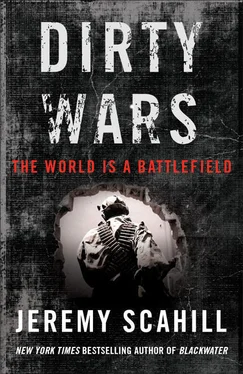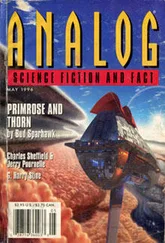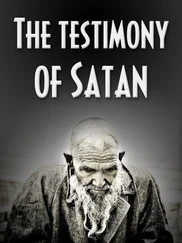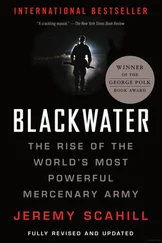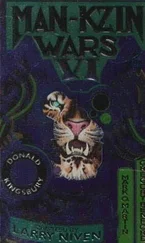Within a month of Bremer’s arrival, talk of a national uprising had begun. As the bloody impact of his decision to dissolve the military spread, Bremer amped up his inflammatory rhetoric. “We are going to fight them and impose our will on them and we will capture or, if necessary, kill them until we have imposed law and order upon this country,” he declared.
On May 1, President Bush, wearing a bomber jacket, stood on the USS Abraham Lincoln before a large “Mission Accomplished” banner. “My fellow Americans, major combat operations in Iraq have ended,” he declared. “In the battle of Iraq, the United States and our allies have prevailed.” It was a fairy tale. The Saddam regime may have been deposed and Saddam’s days were numbered (not long after Bush’s speech, on July 23, 2003, Saddam’s sons, Uday and Qusay, were killed in a JSOC raid), but a guerrilla war—one with multiple warring forces—was just beginning.
Rumsfeld rejected claims that the United States was facing a “guerrilla” insurgency. “I guess the reason I don’t use the phrase ‘guerrilla war,’” he quipped, “is because there isn’t one.” But Rumsfeld’s newly appointed CENTCOM chief, who was technically the on-the-ground commander of the Iraq War, disagreed. General John Abizaid said at a July 2003 press conference at the Pentagon that the United States was now facing a “classical guerrilla-type war” in Iraq. Abizaid knew another front of resistance was opening, and it was not being run by Saddam’s “henchmen.” By mid-August 2003, three months after Bremer arrived in Baghdad, resistance attacks against US forces and Iraqi “collaborators” were a daily occurrence. New militias were forming, with both Sunni and Shiite groups attacking American troops. Rumsfeld and Bush both downplayed the extent of the uprisings in Iraq, saying they were being driven by fallen regime “dead-enders,” “criminals,” “looters,” “terrorists,” “anti-Iraqi forces” and “those influenced by Iran.” But there was one fact they couldn’t deny: The number of Americans returning home in tin coffins was exploding as attacks against US forces increased by the day. “We believe we have a significant terrorist threat in the country, which is new,” Bremer finally acknowledged on August 12. “We take this very seriously.”
On August 19, a Kamaz flatbed truck pulled up to the United Nations headquarters at Baghdad’s Canal Hotel and parked just below the office window of Sergio Vieira de Mello, the United Nations special representative in Iraq. Inside the building, a press conference was under way. Moments later, a massive explosion rocked the building. The truck had been driven by a suicide bomber and was filled with explosives, including a five-hundred-pound bomb from the former Iraqi military’s reserves. In all, twenty-two people were killed, including de Mello. More than one hundred were injured. The United States and the United Nations alleged that the bomber had been sent by Abu Musab al Zarqawi, a Jordanian-born militant who headed up the group Jama’at al Tawhid wa’al Jihad. A few days after the bombing, Rumsfeld delivered a speech at a Veterans of Foreign Wars convention. “We still face determined adversaries, as we’ve seen in Iraq and Afghanistan, the dead-enders are still with us, those remnants of the defeated regimes who’ll go on fighting long after their cause is lost,” Rumsfeld declared. “There are some today who are surprised that there are still pockets of resistance in Iraq, and they suggest that this represents some sort of failure on the part of the Coalition. But this is not the case. Indeed I suspect that some of you in this hall today, especially those who served in Germany during World War II or in the period immediately after the war were not surprised that some Ba’athists have kept on fighting. You will recall that some dead-enders fought on during and after the defeat of the Nazi regime in Germany.”
Rumsfeld tried to cling to the idea that the main resistance in Iraq was coming from such quarters, but the reality was, the most lethal forces rising in Iraq were responding to the invasion and occupation. While the United States was fighting multiple Sunni insurgent groups, Shiite leader Moqtada al Sadr was waging an uprising against the United States, along with a “hearts and minds” campaign to provide basic services to Iraqi neighborhoods. Because Sadr had brokered a tenuous alliance with some Sunni resistance groups, the United States was facing the possibility of a popular nationalist rebellion.
After the August bombing, the United Nations withdrew most of its six hundred international personnel from Iraq. In September 2003, the UN complex was bombed a second time, spurring the United Nations to withdraw all remaining non-Iraqi employees from the country. It was a powerful symbol of how far from accomplished the US mission in Iraq actually was.
That month, McChrystal became JSOC commander, tasked with crushing the insurgency that had been sparked by his bosses’ own policies, about which he had harbored doubts. Next to Saddam and his henchmen, the Jordanian terrorist Zarqawi, who had come to Iraq to fight against the US occupation, would become target number one of McChrystal’s task force.
Zarqawi had traveled to Afghanistan to fight with the US-backed mujahedeen against the Soviet occupation. In early 2000, he had been indicted in absentia in a Jordanian court for plotting to attack American and Israeli tourists. The Bush administration had tried to use Zarqawi to prove an al Qaeda tie to Iraq, after Zarqawi allegedly received medical treatment in Baghdad in 2002. When Bush made his case in a nationally televised address on October 7, 2002, that Saddam’s regime posed a “grave threat,” he cited “high-level contacts” between Saddam’s government and al Qaeda, charging that “some al-Qaeda leaders who fled Afghanistan went to Iraq. These include one very senior al-Qaeda leader who received medical treatment in Baghdad this year, and who has been associated with planning for chemical and biological attacks.” In his UN speech, Colin Powell called Zarqawi the leader of a “deadly terrorist network” that had been given safe haven by Saddam’s government. But the charge that Zarqawi was in Baghdad with the consent of the Iraqi government was a dubious one. Saddam’s regime and al Qaeda were rivals. Nonetheless, after the invasion, Zarqawi would eventually have a $25 million bounty on his head and JSOC hunting him in Iraq.
There is no doubt that Zarqawi was a savage character, but he was also a convenient villain for the United States. Washington was facing a mounting resistance in Iraq, and by inflating Zarqawi’s importance, it could place the fight in Iraq within the context of the broader war on terror. Zarqawi played his role perfectly. A year after the UN bombing, Zarqawi and his group would pledge allegiance to Osama bin Laden and form al Qaeda in Mesopotamia, also known as al Qaeda in Iraq (AQI). Despite his declaration of loyalty, Zarqawi would ultimately prove problematic for al Qaeda. His ruthless attacks on Muslims—in both Iraq and Jordan—would eventually play into the hands of the US occupation and Washington’s propaganda campaign against the Iraqi resistance.
IRAQ WOULD SERVE AS A laboratory for creating a new kill/capture machine, centered on JSOC, run by McChrystal and accountable to no one but a small group of White House and Pentagon insiders. Within months, the targeted kill/capture program would begin to resemble the CIA’s Phoenix Program from the Vietnam War, in which the Agency, supported by US Special Operations Forces and indigenous militias, carried out a vicious campaign to “neutralize” the Vietcong and its support networks. In plain terms, the Phoenix Program was effectively a well-organized death squad. “They killed huge numbers, thousands and thousands, of suspected Vietcong operatives,” said Gareth Porter, an independent historian who has written extensively about the Phoenix Program in Vietnam, as well as the history of JSOC. “Phoenix was in fact the grandfather of [the JSOC] approach to a war.”
Читать дальше
